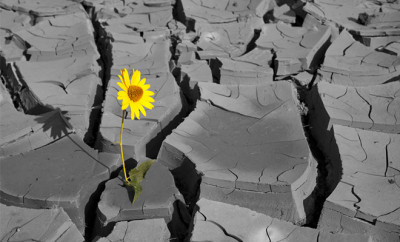Make Time for Awe
Jason Silva is a self-described epiphany junkie. He recently enthused to me about how some movies, for example, manage to capture attention and create a complete, immersive transformation for the viewer.
In his “Shots of Awe” YouTube series, Silva wants to interrupt your mundane existence with “philosophical espresso shots” designed to inspire you to live to the fullest.
It’s easy to get swept away by Silva’s vision of the future: a revolutionary convergence of biotechnology, nanotechnology, and artificial intelligence. He considers awe to be a pivotal ingredient in making ideas resonate. In his three-minute clips, he hardly takes a breath as he spouts rousing optimism over digitally animated film.
He may be onto something. A new study published in the journal Psychological Science shows there are residual health benefits to having your mind blown.
“People increasingly report feeling time-starved, which exacts a toll on health and well-being,” states the study. Using three experiments, researchers Melanie Rudd and Jennifer Aaker of the Stanford University, and Kathleen Vohs of the University of Minnesota, examined whether awe can expand perceptions of time availability. They found that participants “who felt awe, relative to other emotions, felt they had more time available, were less impatient, were more willing to volunteer their time to help others, and more strongly preferred experiences over material goods.”
It can be hard to generalize what people consider jaw-dropping, but Vohs says research demonstrates what consistently creates an awesome experience. Travel ranks high. So does gazing at the cosmos on a clear night or watching a sensational film, as well as anytime we encounter massive quantities: colorful tulips in bloom, a bustling market in India, or a stunning school of fish.
Novelty and perceptual vastness forces us into the present moment. The study underscores the importance of cultivating small doses of awe in the everyday to boost life satisfaction.
“Awe is quite threatening in certain ways, and something that is challenging and unwelcome can border on fear,” says Vohs, recalling an astonishingly big fish he saw while swimming in the ocean. “It was giant—no big teeth, and it seemed like a gentle soul just floating in the water—but still!”
The study describes awe as an experience of such perceptual expansion that you need new mental maps to deal with the incomprehensibility of it all. “The experience of awe is one where you are temporarily off-kilter in terms of your understanding of the world,” explains Vohs. “People mostly walk around with a sense of knowing what is going on in the world. They have hypotheses about the way people behave and what might happen; those are pretty air-tight. It is hard to get people to shake from those because that’s just how the brain works. We are always walking around trying to confirm the things we already think. When you are in a state of awe, it puts you off balance and as a consequence, we think people might be ready to learn new things and have some of their assumptions questioned.” Rudd, of Stanford, is currently working on a follow-up study to understand just how awe-inspired moments might open a person up to learning new information.
Vohs agrees that videos like Silva’s could do the trick to inspire awe. In his study, volunteers watched videos of “awesome” things like nature scenes, whales, and parades, and they reported feeling like they had more time to spare after seeing these images.
“Technologies that capture and control attention, including storytelling, IMAX films, and video games, hijack the perceptual apparatus. They put you into a state of immersion—you lose yourself,” says Silva.
He thinks we are predisposed to ignore everyday wonders. “Not being in a state of awe is a way to save energy. It is easier to run on autopilot. It takes energy to blow your mind, but being overwhelmed is worth it. It’s what gives life its luster.”
Whether it’s making time for a walk through nature, meditation, or watching an amazing clip, he recommends rituals that elicit awe for a break in the day and an overall healthier lifestyle.
Silva does not shy away from the range of emotions one might have when considering something of magnitude. He grapples with the tinge of sadness in his personal epiphanies, such as the realization that everyone and everything we find beautiful and magnificent will one day end. That’s a theme he explores in his video “Existential Bummer,” his video about loss and impermanence.
We are simultaneously worms and gods,” he says, an idea that drives him to produce more creatively. “Man is literally split in two: He has an awareness of his own splendid uniqueness, in that he sticks out of nature with a towering majesty, and yet he goes back into the ground … to blindly and dumbly rot and disappear forever.”
In the meantime, Vohs wants to continue working to understand how humans derive meaning in the day-to-day.
“Experiences are non-replicable in terms of what kind of an outcome they can give,” she says. “So there are reverberations of awe in my current work.”
First published at theatlantic.com







